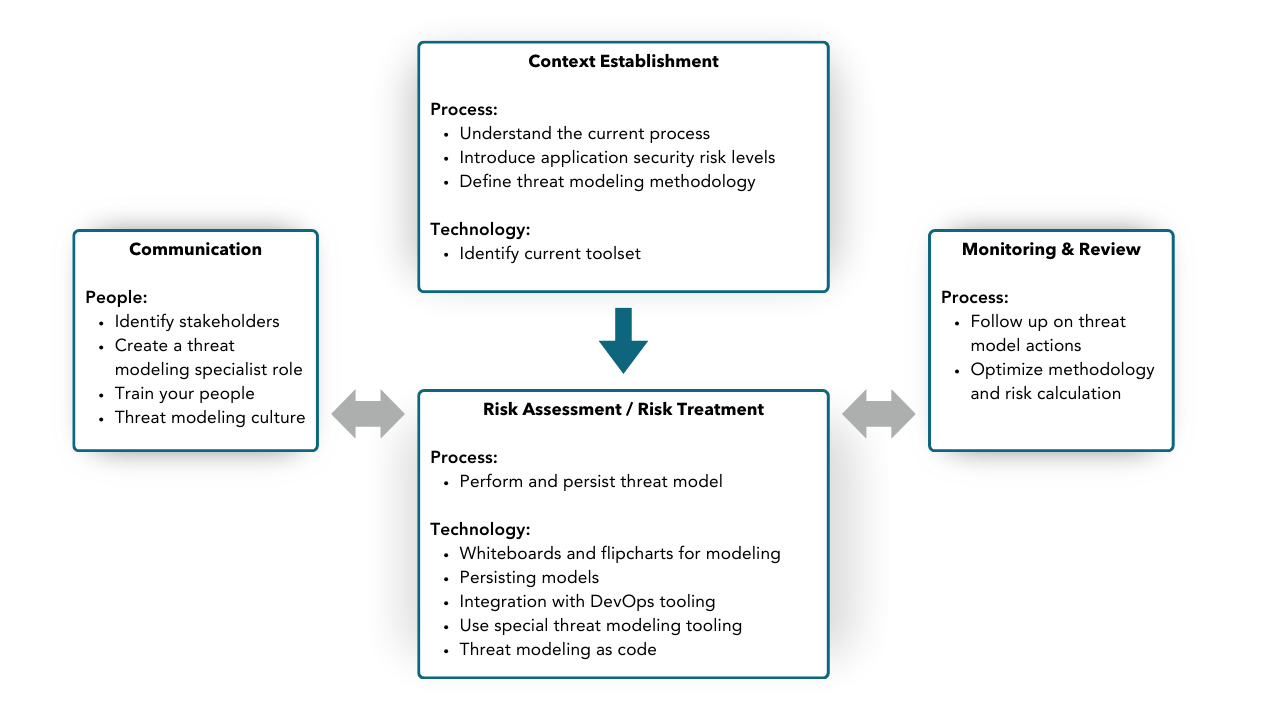Threat modeling is a methodology to identify risks and hence should be integrated in your organization’s risk management process. As a best practice we look at the risk management process described in ISO27005:2018 and map our threat modeling activities on this process.
We visualized a simplified overview of the main stages, which are part of the risk management process in Figure 1. We can summarize the threat modeling activities in three categories:
- Time of the people involved in creating the threat model.
- Threat modeling expertise (especially if you are starting out).
- Time, resources, and authority to address the resulting threats.
The risk management stages we consider for threat modeling are:
- Context establishment
- Communication
- Risk assessment and treatment
- Monitoring and review In each of these stages, we map related threat modeling activities. These threat modeling activities are grouped by people, process, or technology categories.

Figure 1: Threat Modeling in your organization – integration with the risk management process

